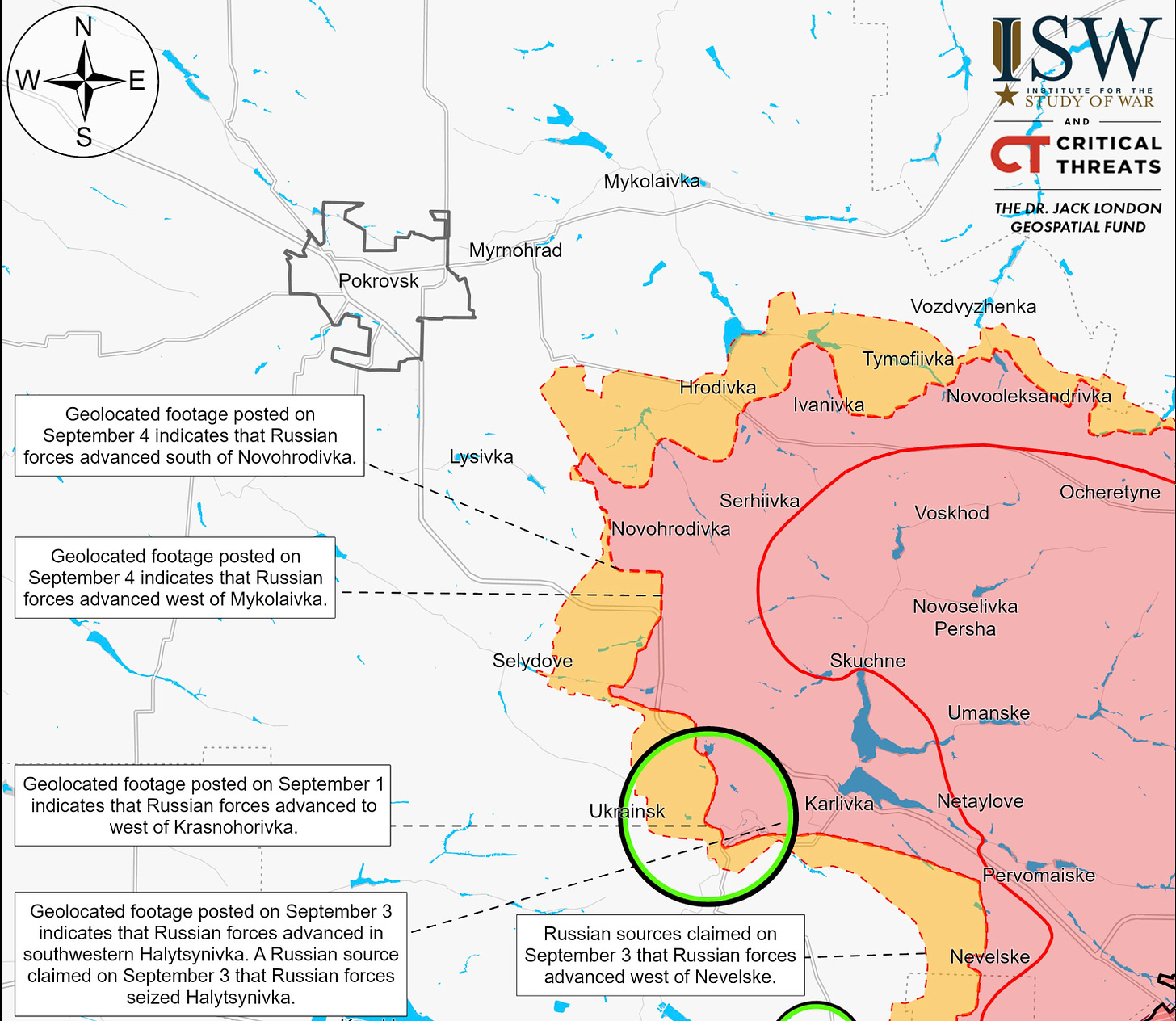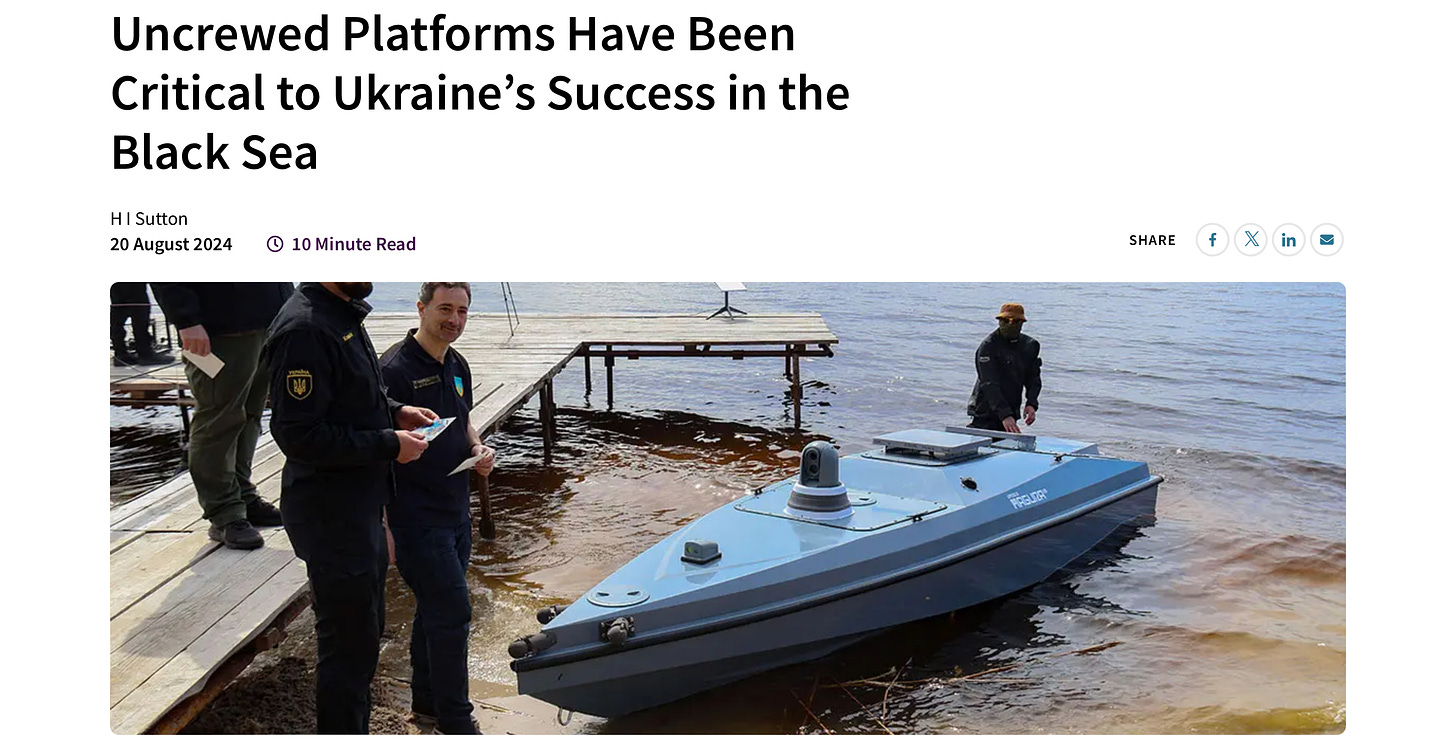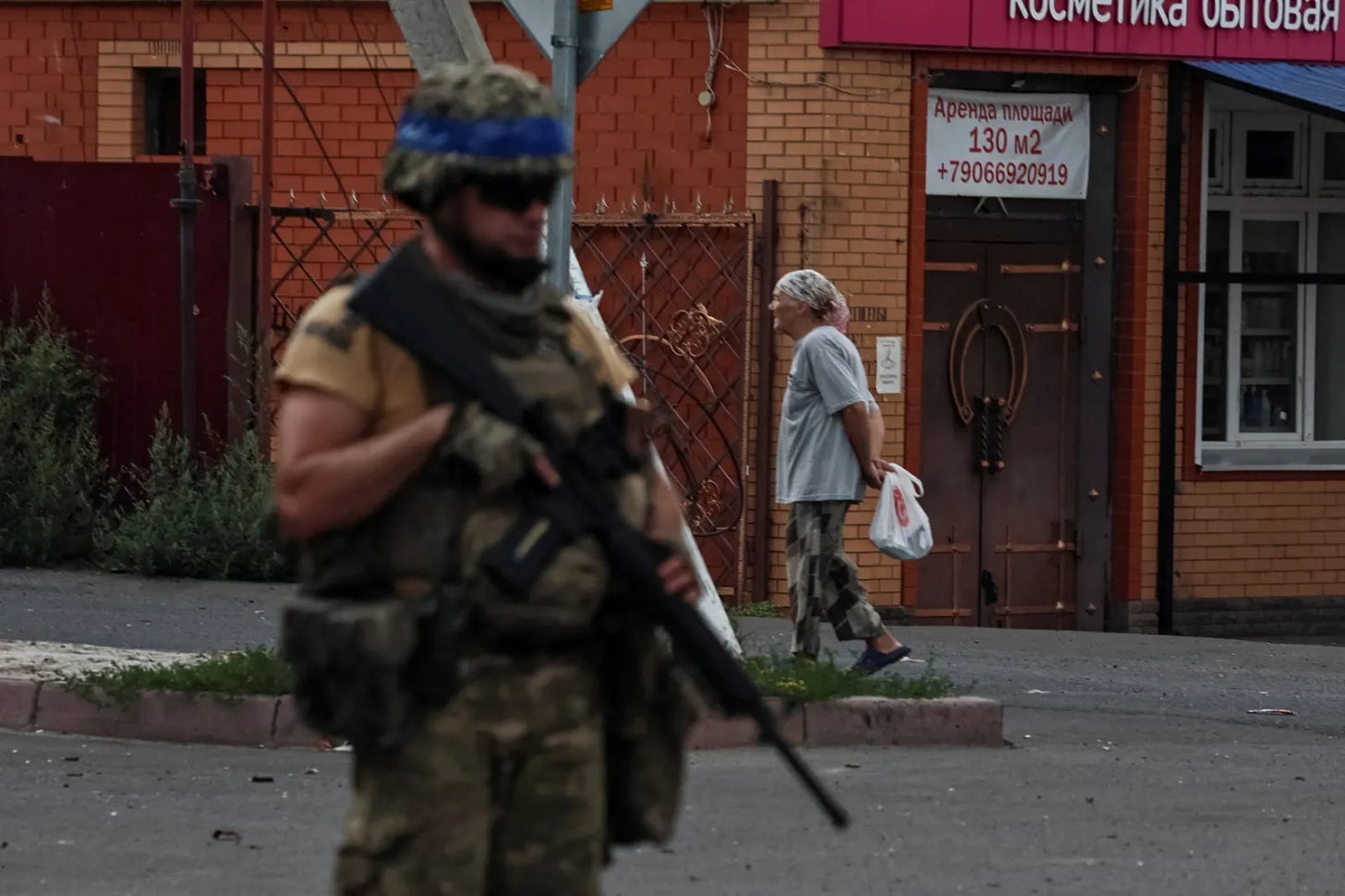The Big Five - 7 September edition
My regular update on conflict and confrontation in Ukraine, the Middle East and the Pacific, accompanied by recommended readings on the character of modern war and planning for future conflict.
It has been a busy week!
In Kyiv, President Zelenskyy undertook a reshuffle of his cabinet. This included moving on the long-serving and well-respected foreign minister, Dmytro Kuleba, and replacing the Minister for Strategic Industries. It is a significant reshuffle but doesn’t bring a large number of new names into the cabinet.
Also this week, the Ukrainian Commander-in-Chief, General Syrskyi gave a sit down interview to CNN. During this interview, he noted in a discussion about the Kursk campaign that:
It reduced the threat of an enemy offensive. We prevented them from acting. We moved the fighting to the enemy’s territory so that [the enemy] could feel what we feel every day.
In Kursk, Ukrainian forces made small gains and appeared to be increasingly consolidating their positions in Kursk. The Russians have transferred somewhere between 30 and 60 thousand troops to the Kursk area to stem the Ukrainian advance, and it is assumed, to eventually attempt to push the Ukrainians out of ‘Mother Russia’. But given the sloppy and slow Russian response so far, and its preference to hurt Ukraine in Pokrovsk over defending one of its own oblasts, I don’t expect the Russians will be ‘liberating’ Kursk anytime soon.
President Zelenskyy this week indicated that, for the time being, Ukraine will be hanging on to the territory it has occupied in Kursk. Speaking on NBC News, Zelenskyy described how “for now, we need it.” He explained how Ukraine intends to hold onto Kursk as it is integral to Ukraine’s Victory Plan to end the war. Later in the week, Zelenskyy claimed that Russia had sustained around 6000 casualties in Kursk.
In the Donbas, Russia made minor progress on a couple of axes of advance in the Donbas. But despite these small advances, most eyes remained on their progress towards the Ukrainian city of Pokrovsk. Ukraine has evacuated civilians from Pokrovsk and the train station has now closed for evacuations.
In an interview this week, Ukrainian Commander-in-Chief described how “Over the last six days the enemy hasn’t advanced a single meter in the Pokrovsk direction. In other words, our strategy is working.” That may or may not be the case, but at some point the Russians will culminate.
No one, not even the Russians, can lose people and equipment at the rate they are on the Pokrovsk axes of advance (and in Kursk) indefinitely. As an update from the British Ministry of Defence noted this week, average daily Russian casualties have now increased to nearly 1200 per day. Whether the Russians culminate during the potential Battle of Pokrovsk, just short of it or just after, it is unlikely Russia’s operational capacity this year extends beyond the Pokrovsk campaign. And there is no certainty they will achieve the capture of Pokrovsk.
President Zelenskyy this week attended the Ramstein conference that holds regular meetings to coordinate NATO (and non-NATO) support for Ukraine. Again, President Zelenskyy spoke about air defence systems as well the need for Ukraine to be able to use American long-range strike weapons to destroy the Russian bombers and fighter aircraft on the ground deep inside Russia that are employed launch the missiles that have caused so many Ukrainian civilian casualties, and so much damage, in Ukraine.
In the wake of the Ramstein conference, the U.S. announced another package of military assistance for Ukraine. However, Zelenskyy’s appeals to the U.S. to allow Ukraine to use American weapons for long-range strikes into Russia appear to have fallen on deaf ears. As a report from The Washington Post notes:
Zelensky’s appeal, delivered at a meeting of the Ukraine Defense Contact Group at a U.S. military base in western Germany, yielded little apparent progress as Kyiv’s chief military backer, the United States, signaled no immediate change to its restrictions on the use of longer-range U.S.-made arms like the Army Tactical Missile System (ATACMS). Defense Secretary Lloyd Austin, who hosted the meeting at Ramstein Air Base, said the Biden administration shares Ukraine’s sense of battlefield urgency. But he appeared to rule out any notion that Washington is ready to change its policy on the use of U.S. weapons deeper within Russia, the world’s largest nuclear power.
In the Pacific this week, the Chinese continued what has now become their standard operating procedure with bullying their neighbors with aggressive military behaviour. And it isn’t just the Philippines that is on the receiving end of Chinese aggression. As I reported last week, China has conducted incursions into Japanese airspace and its EEZ in recent weeks. And, as the excellent monthly infographic (below) from Damien Symon shows, Chinese operations all around Taiwan - at sea and in the air - also continue.
Also in the Pacific this week, the Americans and Koreans undertook a large, combined amphibious exercise. Exercise Ssang Yong 24 featured four large, flat deck amphibious ships (two American and two Korean) and was also the first time that the U.S. Marine Corps’ employed its new Amphibious Combat Vehicle in an exercise on the Korean Peninsula. The combined exercise incorporated over 13,000 personnel, more than ships and 30 aircraft conducting combined division-sized landing force operations.
This week, I have been attending a couple of conferences in Hamburg, Germany (what a beautiful city) that explored military developments in the Indo-Pacific, and the future of maritime warfare. I also got to participate in a panel that discussed the use of fiction, including my 2023 book White Sun War, in thinking about the future of conflict.
These were excellent discussions (thank you again to the awesome conference organisers) and these conferences also provided me with my first opportunity to visit Germany (which I have greatly enjoyed). It also allowed me to catch up with old friends from Japan, Taiwan and elsewhere in the western Pacific, and make new friends and contacts from across Europe.
I did manage to publish one article this week, which explored the Ukrainian Victory Plan. You can read that piece here.
Finally, in some interesting news this week, my first book that was published in 2022 - War Transformed - is going to be published in Taiwan in Chinese. I can’t wait to get a copy!
And now, to my recommended reads.
This week features articles that examine the application of artificial intelligence in the military, the trajectory of the war in Ukraine as well as lessons from the Russo-Ukraine war in 2023. It also includes an interesting article on Chinese developments in autonomous systems and the application of autonomous systems in the maritime environment.
As always, if you only have time to read one article, the first one is my pick of the week.
1. Meat Plus Machines
This interesting article, published by the US Army War College’s War Room, explores how human cognition, including intuition, might be employed in concert with evolving forms of artificial intelligence. The authors argue against the inevitable superiority of human judgment, and propose the need for research and development approaches that “treats empowered military AI as an inevitable, epochal change in the technological character of war.” You can read the full article here.
2. Autonomous System Technologies Evolve
In this really interesting article, Peter Singer and Thomas Corbett examine breakthroughs in autonomous systems technologies claimed by China. Now of course, we should always exercise a dose of caution in any claim of this type from China. But they do have form in technological innovation so perhaps they have made a significant breakthrough here. I will let you come to your own conclusions. You can read the article here.
3. Autonomous Attack in the Maritime Environment
“A consideration of other options shows that the success Ukraine has had in keeping the Russian Black Sea Fleet at bay could only have been achieved using uncrewed vessels.” So begins this terrific article from H.I. Sutton published by the Royal United Services Institution. Sutton explores the development and employment of multiple generations of uncrewed maritime surveillance and attack craft by Ukraine, and how over time, these pushed the Russians out of large parts of the Black Sea. You can read the article here.
4. Lessons from a Year of War
In this piece, published by Parameters, John Nagl and Michael Hackett propose an array of lessons that can be drawn from military operations in Ukraine in 2023. It explores topics such a ground combat, aerial and maritime drone warfare, information operations, electronic warfare among other subjects. While some might think it is too early for such lessons, my counter view would be that it is never too early to being learning from contemporary wars. You can read the article here.
5. Ukraine’s Strategy for Kursk
In this new piece published by Foreign Affairs, Mike Kofman and Rob Lee explore the status of the Russian invasion of Ukraine, the Ukrainian campaign in Kursk and the potential trajectories of the war from here. These two authors have assiduously followed and analyzed the war right from the beginning, and this article is well worth a read. You can read the full piece here.














Thanks for this! If there are any papers online from the panel about fiction and the future of combat please let us know- or recordings of that discussion. Very interesting.